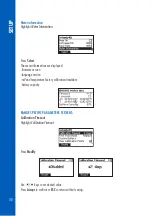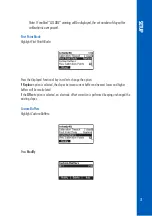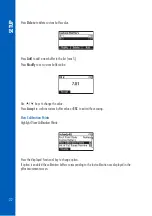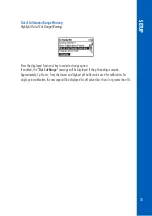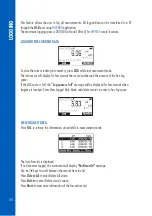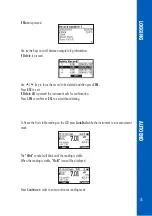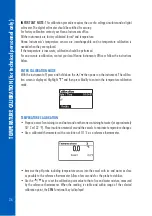
22
GOOD LABORA
TORY PRACTICE (GLP)
GLP is a set of functions that allows storage and retrieval of data regarding the maintenance and
status of the electrode.
All data regarding the pH calibration is stored for the user to review when necessary.
EXPIRED CALIBRATION
The instrument is provided with a real time clock
(RTC)
, in order to monitor the time elapsed since
the last pH calibration.
The real time clock is reset every time the instrument is calibrated and the
“Expired Calibration”
status is triggered when the instrument detects a calibration time out. The
“CAL DUE”
tags will start
blinking to warn the user that the instrument should be recalibrated.
The calibration time out can be set (see
SETUP
for details, page 23) from 1 to 7 days or can be
disabled.
For example, if a 4 days time out has been selected, the instrument will issue the alarm exactly
4 days after the last calibration.
However, if at any moment the expiration value is changed (e.g. to 5 days), then the alarm will be
immediately recalculated and appear 5 days after the last calibration.
Notes: When the instrument is not calibrated or calibration is cleared (default values
loaded) there is no “Expired Calibration”, and the display always shows the “CAL DUE”
tags blinking.
When an abnormal condition in the RTC is detected, the instrument forces the “Expired
Calibration” status.
LAST pH CALIBRATION DATA
The last pH calibration data is stored automatically after a successful calibration.
To view the pH calibration data, press
GLP
when the instrument is in the measurement mode.
The instrument will display a lot of data including calibration buffer, offset, slope, electrode
condition.
Note: Buffers displayed in video inverse mode are from previous calibrations. The custom
buffers are marked with an “*” on the right side of the buffer value. “No user calibration”
message is displayed if all calibration are cleared or the instrument was not calibrated.























